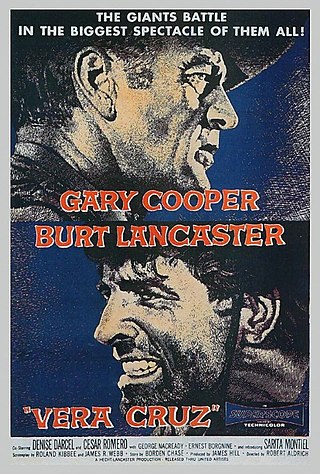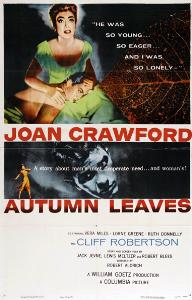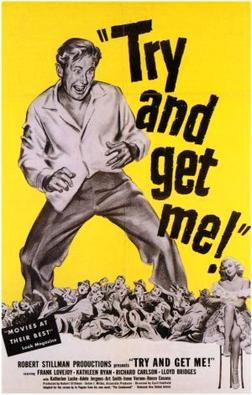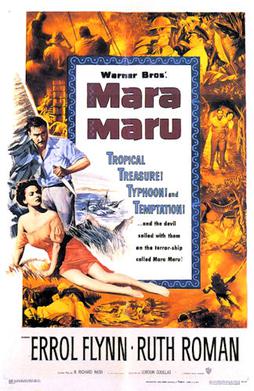
Robert Burgess Aldrich was an American film director, producer, and screenwriter. An iconoclastic and maverick auteur working in many genres during the Golden Age of Hollywood, he directed mainly films noir, war movies, westerns and dark melodramas with Gothic overtones. His most notable credits include Vera Cruz (1954), Kiss Me Deadly (1955), The Big Knife (1955), Autumn Leaves (1956), Attack (1956), What Ever Happened to Baby Jane? (1962), Hush...Hush, Sweet Charlotte (1964), The Flight of the Phoenix (1965), The Dirty Dozen (1967), and The Longest Yard (1974).

Cyril Raker Endfield was an American screenwriter, director, author, magician and inventor. Having been named as a Communist at a House Un-American Activities Committee hearing and subsequently blacklisted, he moved to the United Kingdom in 1953, where he spent the remainder of his career.

Vera Cruz is a 1954 American Western film directed by Robert Aldrich and starring Gary Cooper and Burt Lancaster, featuring Denise Darcel, Sara Montiel, Cesar Romero, Ernest Borgnine, Charles Bronson and Jack Elam. Set during the Franco-Mexican War, the film centers on a group of American mercenaries tasked with transporting a large shipment of Imperial gold to the port of Veracruz, but begin to have second thoughts about their allegiances. It was produced by Hecht-Lancaster Productions and released by United Artists on 25 December 1954.

Autumn Leaves is a 1956 American psychological drama film directed by Robert Aldrich and starring Joan Crawford in an older woman/younger man tale of mental illness. The film was distributed by Columbia Pictures. The screenplay was written by Jean Rouverol and Hugo Butler, though it was credited to Jack Jevne, since Rouverol and Butler were blacklisted at the time of the film's release.
Hugo Dansey Butler was a Canadian-born screenwriter working in Hollywood who was blacklisted by the film studios in the 1950s.

Twilight's Last Gleaming is a 1977 thriller film directed by Robert Aldrich and starring Burt Lancaster and Richard Widmark. The film was a West German/American co-production, shot mainly at the Bavaria Studios.

The Sound of Fury is a 1950 American crime film noir directed by Cy Endfield and starring Frank Lovejoy, Kathleen Ryan, Richard Carlson. The film is based on the 1947 novel The Condemned by Jo Pagano, who also wrote the screenplay.

The Underworld Story is a 1950 American film noir crime film directed by Cy Endfield and starring Dan Duryea, Herbert Marshall, Gale Storm, Howard Da Silva and Michael O'Shea. Da Silva plays the loud-mouthed gangster Carl Durham, one of his last roles before becoming blacklisted.
Joseph Francis Biroc, ASC was an American cinematographer. He was born in New York City and began working in films at the Paragon Studios in Fort Lee, New Jersey. After working there for approximately six years, he moved to Los Angeles. Once in Southern California, Biroc worked at the RKO Pictures movie studio. During World War II, he served in the U.S. Army Signal Corps, and filmed the Liberation of Paris in August 1944. In 1950, Biroc left RKO Pictures and freelanced on projects at various studios. In addition to his film work, which included It's a Wonderful Life (1946) and The Flight of the Phoenix (1965), Biroc worked on various television series, including the Adventures of Superman and Wonder Woman. He frequently collaborated with film director Robert Aldrich.

Reginald Lawrence Knowles, better known as Patric Knowles, was an English film actor. Born in Horsforth, West Riding of Yorkshire, he made his film debut in 1932, and played either first or second film leads throughout his career. He appeared in films from the 1930s to the 1970s.
China Smith is a 30-minute American syndicated television adventure series starring Dan Duryea. It is set in Singapore. It was released in the fall of 1952. The program's alternate title was The Affairs of China Smith, and the last 26 episodes were syndicated with the title The New Adventures of China Smith.

He Ran All the Way is a 1951 American crime drama and film noir directed by John Berry and starring John Garfield and Shelley Winters. Distributed by United Artists, it was produced independently by Roberts Pictures, a company named for Garfield's manager and business partner, Bob Roberts, and bankrolled by Garfield.

One Way Street is a 1950 American film noir crime film directed by Hugo Fregonese and starring James Mason, Märta Torén and Dan Duryea. The crime film takes place mainly in Mexico.

The Las Vegas Story is a 1952 American suspense film noir starring Jane Russell and Victor Mature, directed by Robert Stevenson and produced by Robert Sparks and Howard Hughes with Samuel Bischoff as the executive producer.

The Big Night is a 1951 American film noir directed by Joseph Losey, that features John Drew Barrymore, Preston Foster and Joan Lorring. The feature is based on a script written by Joseph Losey and Stanley Ellin, based on Ellin's 1948 novel Dreadful Summit. Hugo Butler and Ring Lardner, Jr. also contributed to the screenplay, but were uncredited when the film was first released. Robert Aldrich, who had been an assistant director on other films directed by Losey, also has a brief uncredited appearance in a scene at a boxing match.

Apache is a 1954 American Western film directed by Robert Aldrich and starring Burt Lancaster, Jean Peters and John McIntire. The film was based on the novel Broncho Apache by Paul Wellman, which was published in 1936. It was Aldrich's first color film.

Big Leaguer is a 1953 American sports drama film starring Edward G. Robinson and was the first film directed by Robert Aldrich.

Tarzan's Savage Fury is a 1952 film directed by Cy Endfield and starring Lex Barker as Tarzan, Dorothy Hart as Jane, and Patric Knowles. While most Tarzan films of the 1930s, 1940s and 1950s presented Tarzan as a very different character from the one in Edgar Rice Burroughs' novels, this movie does make some allusions to the novels. It was shot in Chatsworth, California's Iverson Movie Ranch. The film was the last to be directed by Cyril "Cy" Endfield in the US. Finding himself one of Hollywood's film-makers blacklisted by the House Un-American Activities Committee he moved to Britain. The film was co-written by Cyril Hume, who'd contributed substantially to the "Tarzan" series back in its bigger budget MGM days. At 81 minutes, this is the longest Tarzan film since Tarzan's Secret Treasure in 1941.

Mara Maru is a 1952 American noir action film directed by Gordon Douglas and starring Errol Flynn, Ruth Roman and Raymond Burr.
Michael Luciano was an American film and television editor with about forty feature film credits and many additional credits for television programs. From 1954 to 1977, Luciano edited 20 of the films directed, and often produced, by Robert Aldrich. Aldrich was a prolific and independent maker of popular films "who depicted corruption and evil unflinchingly, and pushed limits on violence throughout his career." Their early collaboration, the film noir Kiss Me Deadly (1955), was entered into the US National Film Registry in 1999; the unusual editing of the film has been noted by several critics. Luciano's work with Aldrich was recognized by four Academy Award nominations, for Hush...Hush, Sweet Charlotte (1964), The Flight of the Phoenix (1965), The Dirty Dozen (1967), and The Longest Yard (1974).
















